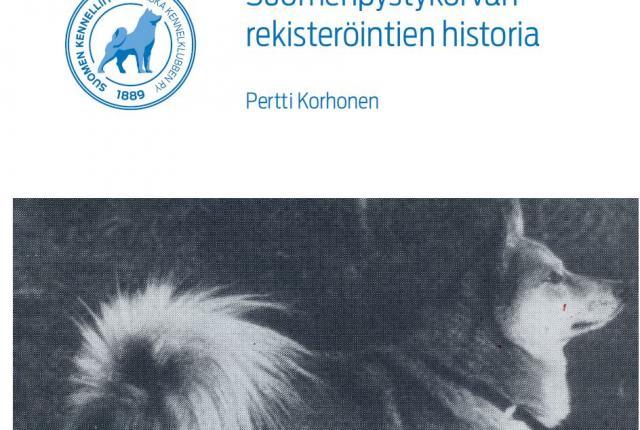Internationally unique research done by Finnish specialists – pedigrees of Finnish Spitz traced back to the 19th Century


A project that has been going on for several years, aiming to map the history of registrations of Finnish Spitz, has resulted in significant results, also in international context. Pedigree data of Finland’s national breed, going all the way back to the 19th Century, can now be reviewed in the Finnish Kennel Club’s Breeding Database.
The Finnish Kennel Club's public Breeding Database now includes verified pedigrees of more than 78,000 Finnish Spitz. Registration numbers for dogs from the 19th and the early 20th Century are preceded by the prefix SF.
Officially unregistered dogs included in pedigrees have been recorded under the registration type “pedigree dog”. Reportedly, data this specific, reaching more than a hundred years back in time, has not been assembled this extensively anywhere else in the world. Visit the Finnish Kennel Club's Breeding Database to learn more about pedigrees of Finnish Spitz.
The Finnish Spitz was bred directly out of the native landrace dog population without crossbreeding. It has been closely linked to Proto-Finnic lives long before migration to present Finnish territories. The Finnish Spitz has tremendously contributed when seeking food and furs and has also served as a house guard. The Finnish Spitz is one of Finland's five native breeds. Cherishing the heredity of these breeds is a special mission of the Finnish Kennel Club.
The historical meaning of the Finnish Spitz can be discovered from its appearance in cave paintings, the national epic of Finland, Kalevala, fairy tales, and different handicrafts.
In 1892, a “Finnish barking bird dog” was added to the Finnish Kennel Club's pedigree book. Breed characteristics drafted by master forester Hugo Richard Sandberg were approved for this dog. A new breed standard was confirmed in 1897, when the name of the breed was also changed to the Finnish Spitz.
It is fair to say that the Finnish Spitz has been an established breed since the 1930s. It was declared Finland's national dog breed in 1979. The Finnish Spitz is a valuable aspect of our vibrant national cultural heritage and it is closely linked to the history of the Finnish people. The Finnish Kennel Club, The Finnish Hunters' Association, and the Finnish Spitz Club of Finland have worked together in order to include hunting with the Finnish Spitz in UNESCO’s lists of Intangible Cultural Heritage.
Besides a hunting dog, the Finnish Spitz is an excellent family dog and can today even be found in cities. The breed is relatively healthy. Around 600 to 700 Finnish Spitz are registered every year.
An internationally historical decision was made in Finland in 2006, when the Karelo-Finnish Laika from Russia was merged with the Finnish Spitz with the goal to preserve the viability of the Finnish Spitz.
The registration history of the Finnish Spitz has been researched in a project by the Finnish Kennel Club, established by request of the breed club representing Finnish Spitz in Finland, Suomen Pystykorvajärjestö. The work was initiated by Taisto Collanus, an eager Finnish Spitz enthusiast who has served as a puppy and breeding adviser for Finnish Spitz during the 80’s and the 90’s.
As of late 2016, the research was continued under the leadership of Pertti Korhonen, a long-time Finnish Spitz enthusiast, in the Finnish Kennel Club’s Koiranet Steering Group. In addition to Collanus and Korhonen, Mauri Kumpulainen also significantly contributed to the project by constructing a separate database, including registration data of Finnish Spitz, as well as tools for viewing the data.
More information about different phases of data collection, historically remarkable breeders, and dogs can be found in Finnish in the report written by Pertti Korhonen:
Pertti Korhonen
pertti.korhonen@live.com
tel. +358 400 680 395